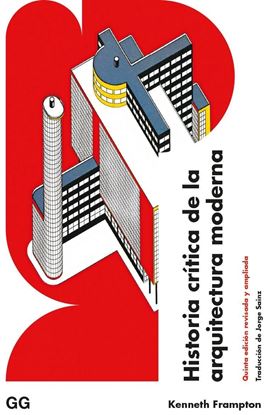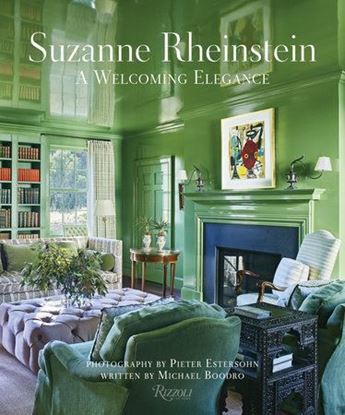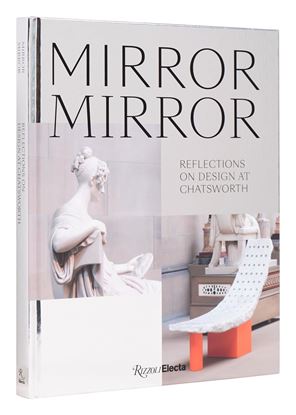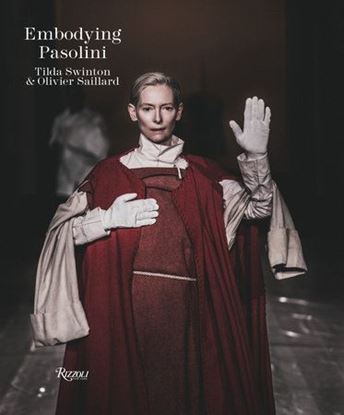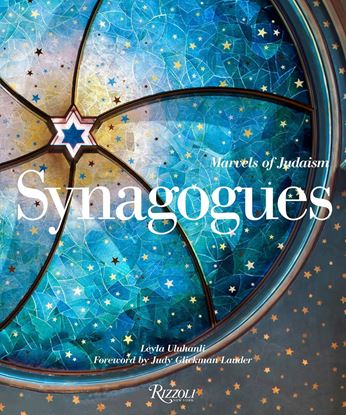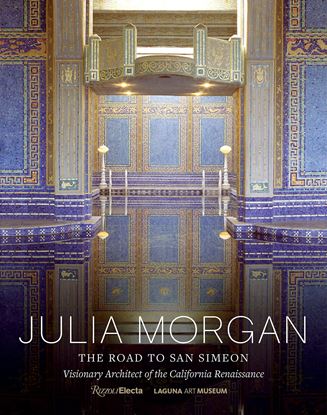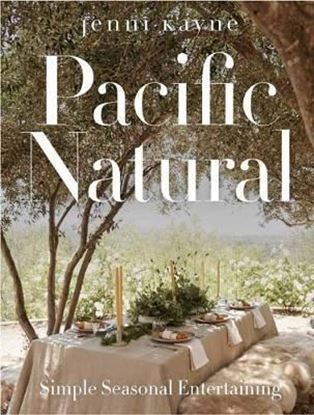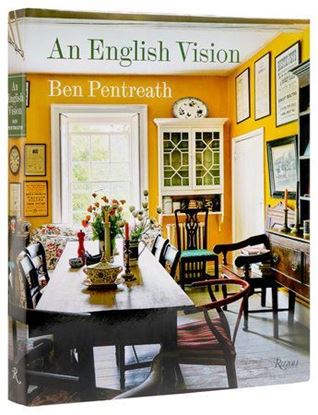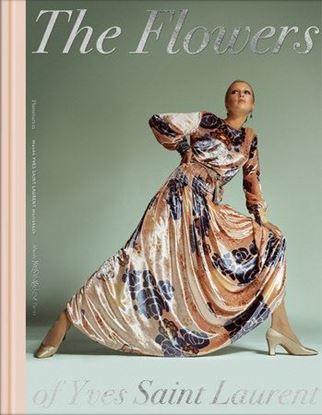

HISTORIA CRITICA DE LA ARQUITECTURA
Desde su primera edición en 1980, la Historia crítica de la arquitectura moderna de Kenneth Frampton se ha convertido en un clásico imprescindible dentro de la bibliografía académica sobre historia de la arquitectura moderna. En esta quinta edición ampliamente revisada y actualizada, el autor ha añadido una nueva y extensa sección que explora al detalle la evolución del Movimiento Moderno en la arquitectura en todo el mundo a finales del siglo xx y principios del xxi. En ella, se examinan las diversas formas en que los arquitectos no solo responden a los contextos geográficos, climáticos, materiales y culturales, sino que siguen también distintas líneas de enfoque en relación a la topografía, la morfología, la sostenibilidad y la forma cívica.
2,995
2,396
SUZANNE RHEINSTEIN
Over the past decade, celebrated style maker Suzanne Rheinstein has achieved an unprecedented level of refinement and clarity. Her love of objects from the past remains a touchstone, but in her newest rooms, stylish modernity and an elegant simplicity hold sway.
Presented are beautifully photographed homes of clients Suzanne Rheinstein has worked with before that reflect a vision of richness tempered by restraint. Her longtime fans will find new inspiration in these pages. Throughout, she shares her ideas of how to live in a relaxed way surrounded by artworks and personal collections. A traditional Georgian library is done in a totally untraditional lacquered green, while a San Francisco town house revamp includes a “California” room filled with Moroccan rugs and rattan chairs, and a serene retreat has a guesthouse evocative of the bohemian 1970s.
2,995
2,396
MIRROR MIRROR
The world’s most important contemporary designers showcase their work within the historic setting of Chatsworth House to shine light and spark conversation on the intriguing juxtaposition of the old and the new, the past and the future, and the evolution of design histories and practices.
Chatsworth is an extraordinary environment to experience design: a repository for great works of fine and decorative art commissioned by generations of the Cavendish family for over four centuries. Expanding on the eponymous 2023 exhibition at Chatsworth, Mirror Mirror features the works of sixteen contemporary artists through captivating in-situ photography with accompanying artist biographies and essays that unearth how historic artifacts and environments inform and inspire modern artists' practices today. This diverse group of artists includes Michael Anastassiades, Ini Archibong, Wendell Castle, Andile Dyalvane, Ndidi Ekubia, Najla El Zein, Formafantasma, Joris Laarman, Max Lamb, Fernando Laposse, Jae Sae Jung Oh, Samuel Ross, Chris Schanck, Ettore Sottsass, Faye Toogood, and Joseph Walsh. From lithe, LED lighting structures illuminating the halls of the Chatsworth library to a seating sculpture hand-carved in Iranian travertine in the grand estate’s formal Rose Garden, these modern works create unexpected and timeless connections with the house’s architecture, interiors, furniture, and ceramics.
2,995
2,396
EMBODIYING PASOLINI
Longtime creative collaborators Tilda Swinton and Olivier Saillard present an illustrated tribute to the costumes of legendary Italian director Pier Paolo Pasolini’s iconic films.
Retracing Pier Paolo Pasolini’s entire cinematography—which continues to fascinate audiences almost half a century after his passing—Embodying Pasolini explores the costumes that brought his films to life. From The Gospel According to St. Matthew (1964), The Canterbury Tales (1972), and Arabian Nights (1974) to Salò, or the 120 Days of Sodom (1975), Pasolini’s movies are known for their provocative flair—making them staples of art cinema’s golden age. Styled by Danilo Donati, the costumes—garments, coats, and hats—enlivened the films with their rich textures, volume, color, and embellishments.
2,995
2,396
SYNAGOGUES. MARVELS OF JUDAISM
This visually striking compendium illustrates the architectural and historical evolution of over 60 iconic synagogues worldwide. Beginning with the foremost archaeological sites in the Holy Land, it extends to the Jewish sanctuaries of Europe, North Africa, Russia, the Caucasus, Israel, and the New World, from the most ancient to the most innovative creations around the globe. Masterpieces such as Frank Lloyd Wright’s Beth Sholom Synagogue in Pennsylvania, the Grand Synagogue in Paris, New York’s Temple Emanu-El, and Dresden’s Neue Synagogue are all featured in magnificent detail. In a series of compelling essays, prominent scholars Lidia Chakovskaya, Steven Fine, Max Fineblum, Mohammad Gharipour, Samuel D. Gruber, Sergey R. Kravtsov, Michael Levin, and Edward van Voolen explore the diverse architectural styles that reflect the synagogue’s rich, complex, and often tragic history. Noted Judaic studies authority Aaron Hughes provides the introduction, highlighting the synagogue’s history and liturgical furnishings from silver menorahs and textiles to carved wooden cabinets and lanterns of eternal light. This gorgeously illustrated volume will appeal to those with an appreciation for art and architecture as well as lovers of Jewish history.
2,995
2,396
JULIA MORGAN
Julia Morgan was truly a pioneer of her time—among other accomplishments, she was the first woman architect to be licensed in California, in 1904. Through her remarkable life and legacy, this book celebrates the Beaux-Arts architecture of California. Focusing on Morgan’s most famous project in the state, Hearst Castle, to which she devoted more than 30 years of her life, this volume also examines, for the first time, Morgan’s fabulous early buildings in the style. Morgan designed more than 700 buildings across California, many of which are designated landmarks today. Deepening the reader’s understanding of California archi-tecture, this book also places into context Morgan’s ambitions, her influences and inspirations, as well as her daily practice and challenges as a woman shaping an extraordinarily prolific and highly successful career in a man’s world.
To better understand the Beaux-Arts training Morgan underwent in Paris, the reader is taken through the challenging, highly arduous Ecole des Beaux-Arts curriculum, which Morgan completed, a lone woman among men. Also explored, in detail, is the story of how the studio and kilns of California Faience, a Berkeley ceramic artisan’s shop, became the supplier of tens of thousands of tiles designed by Morgan and overseen by Hearst himself to decorate their architectural master-piece overlooking the Pacific Ocean.
2,995
2,396
PACIFIC NATURAL
Both practical and inspiring, the first book from Jenni Kayne--the creator of the eponymous lifestyle brand--offers ideas and tips for entertaining and living well throughout the year.
Jenni Kayne embodies an effortless aesthetic, where natural beauty is found in every detail. Pacific Natural illustrates Jenni's conscious way of living through personal anecdotes and tips with Jenni's home state of California serving as the backdrop. Organized by season, this entertaining book is your guide to creating special moments with family and friends. Each chapter includes tabletop ideas, simple crafts, tips for keeping a stocked kitchen and pantry, what to plant in your garden, and healthy, delicious recipes. From an apple harvest dinner and at-home herb drying in the fall, cocktail parties andDIY gift ideas in the winter, flower arranging in the spring and a beach picnic in the summer, Jenni shares her philosophy for creating traditions and living mindfully all year long.
A thoughtful hands-on approach for stylish and balanced living, Pacific Natural shows us how to make the most of the time we spend together, treating life's details with creativity and care.
3,200
2,560
AN ENGLISH VISION
This is the first of Pentreath’s books to present his own output in its entirety—from his personal residences in Dorset, London, and Scotland that brought him international fame to many old and new houses that he has designed and some of the larger, town-scaled projects that make his practice unique in the world of traditional design. Although the results range from his colorful and romantic versions of the English country cottage to traditional splendor, there are underlying ideas that inform the breadth of his output—a sense of scale, proportion, craft, detail, sustainability, and appropriateness—that have a universal relevance today.
3,200
2,560
THE FLOWERS OF YVES SAINT LAURENT
Produced with the Yves Saint Laurent museums in Paris and Marrakech, this book examines how flowers served as the designer’s muse throughout his life and work.
Yves Saint Laurent’s passion for flowers and gardens was the source of endless inspiration. From a thousand and one rose buds to sprigs of lily of the valley, from an avalanche of bougainvillea to delicate poppy blooms, and from sheaves of wheat to majestic lilies, he metamorphosed nature in his creations. Employing flowers as a palette of patterns and techniques, he adorned women in floral appliqués, prints, and embroideries.
3,200
2,560

